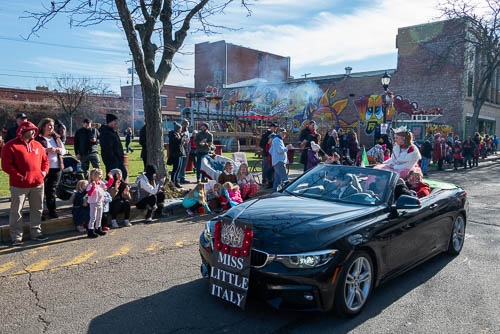
Little Miss Italy; “Rising Phoenix” Mural by Shane Pilster

Places and Their People, History, and Lore


So, a little bit over a week ago, my maternal grandmother died. Grandma Margaret.
Grandma celebrated her 90th birthday this past summer. In fact, she celebrated her birthday during the week between my birthday and my sister’s birthday, and several other family birthdays occurred during this same week. Grandma left behind a lot of people who loved her. However, I understand that all or almost all people who live to the age of 90 lose much. My grandfather died several years ago. And, as Grandma reminded me, she herself had only one sister, named Shirley. Shirley died of cancer in her 20’s. About two years after the first Shirley died, my grandmother had my mom and she named my mom Shirley. My mom, the second Shirley, died of cancer three years ago. Grandma wondered about this to me. She wondered about the odds of losing both of her Shirleys to the same disease, decades apart.
But, I remember something completely different now. After my mom died, I sat and looked through Grandma’s photo albums with her. We looked through an album consisting mostly of photos that Grandma herself took. Grandma took A LOT of photos of sunrises and sunsets. She took some of these photos when she visited my uncle in Florida. She took other sunset photos over the winter countryside after my grandparents retired and moved out to farmland in Beaver County and raised goats. She took them with her point-and-shoot camera. She paid to develop them, then put them into her photo albums along with her photos of her family.
I learned that day that when I enjoy a sunrise or a sunset, I owe this at least in part to Grandma Margaret.
Sunrises are beautiful. Sunsets are sad but also beautiful. Neither exists without the other.
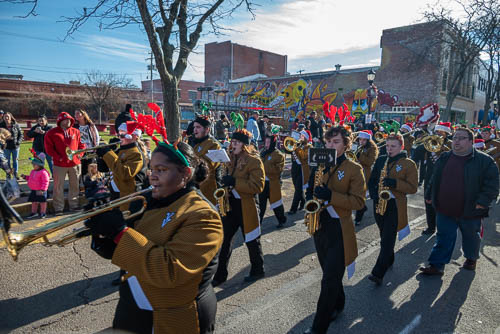
If you Google “New Kensington” and “Voodoo Brewery,” you can find a lot of photos of Shane Pilster’s “Rising Phoenix” mural. In fact, here are photos that I took last December, a week after Krampus brought me my camera.
You can also find a lot of information about New Kensington’s Voodoo Brewery / Voodoo at the Ritz and Old Town Overhaul with a quick Google search. Here’s such an article from the Trib.
So, for this blog post, I took a bunch of photos that showed the “Rising Phoenix” mural in the background as the community gathered for New Kensington’s Christmas Parade.
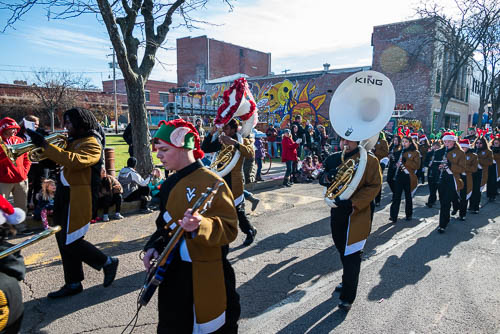
I felt really defeated last spring over the setbacks that Jonathan and I had encountered in trying to rebuild our front porch. I wrote a snarky post on this very blog about how murals weren’t going to solve New Kensington’s problems. The murals weren’t solving any of MY problems. My sister Elizabeth is a hero because she read the post right after I published it. She told me that I was harsh. I took the blog post down about an hour after I published it. The post now resides for eternity in blog post hell. Or, maybe it resides in blog post purgatory because with my luck it’s cached somewhere.
But, now our porch is almost complete. I feel much more hopeful about my future here in New Kensington.
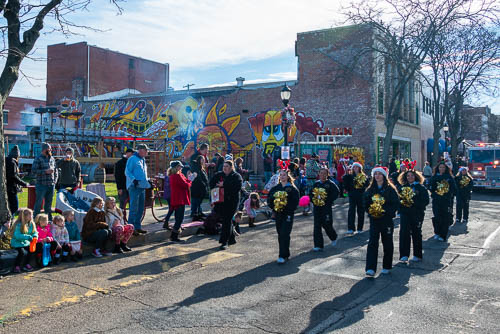
These marchers arrived on a bus from Valley High School in New Kensington. I watched the bus arrive. It travelled past me and unloaded on the next block over from where I sat waiting the parade to begin. I saw kids sitting next to the windows, holding their trombones.
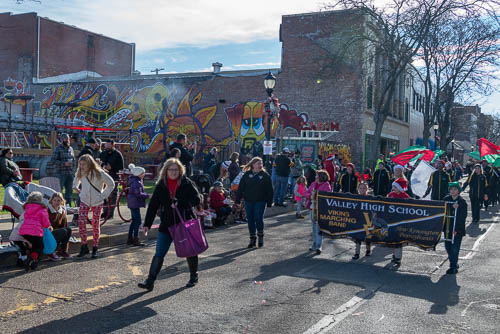
I have a soft spot for the high school marching band. I marched in a high school band when I grew up in Somerset County. I played the clarinet.
I don’t remember getting to march past any cool brewery murals, though.
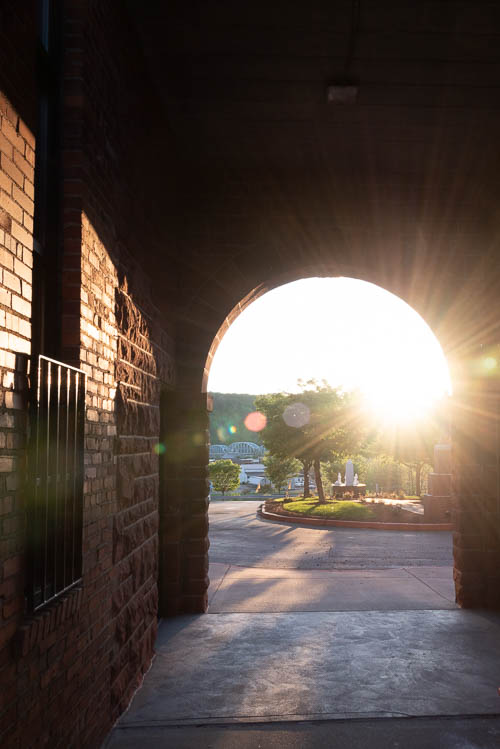
Eight days ago (so, on April 29), Jonathan and I celebrated our fifteenth wedding anniversary. We were married at Mount Saint Peter in New Kensington. Jonathan’s late mother, Fran, worked at the parish at that time. So, I have a special place in my heart for Mount Saint Peter.
I look for opportunities to develop my skill at sunset photography. So, I took my camera to Mount Saint Peter for this evening’s sunset. This almost didn’t happen because clouds frequently covered the sun this afternoon! In fact, clouds covered the sun WHILE I waited at Mount Saint Peter for the sun to set.
The clouds moved just in time for me to witness the sunset.
Now, you will see a bridge in the background of the first photo that I posted. This bridge crosses the Allegheny River in downtown New Kensington. The bridge sits in the river valley. Much of New Kensington sits in this same valley. However, Mount Saint Peter sits on a hill overlooking downtown New Ken.
I mention all of this because I like to think of the Allegheny River as “my river.” The Allegheny River is obviously NOT merely “my river.” I was actually born directly across the Susquehanna River from Harrisburg. I grew up near the Susquehanna and in the Allegheny Mountains. However, ever since I was a child and I visited my grandparents in Pittsburgh, I felt as if I belonged with the Allegheny River. Perhaps I lived along the Allegheny in another life? Perhaps I was always destined to return to the Allegheny?
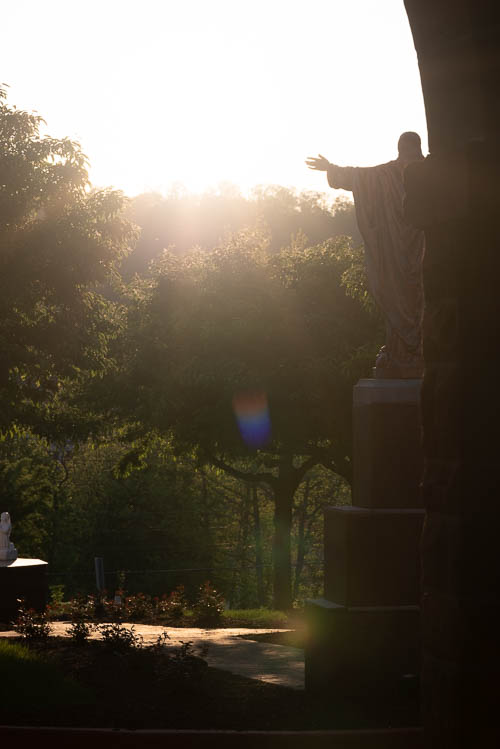
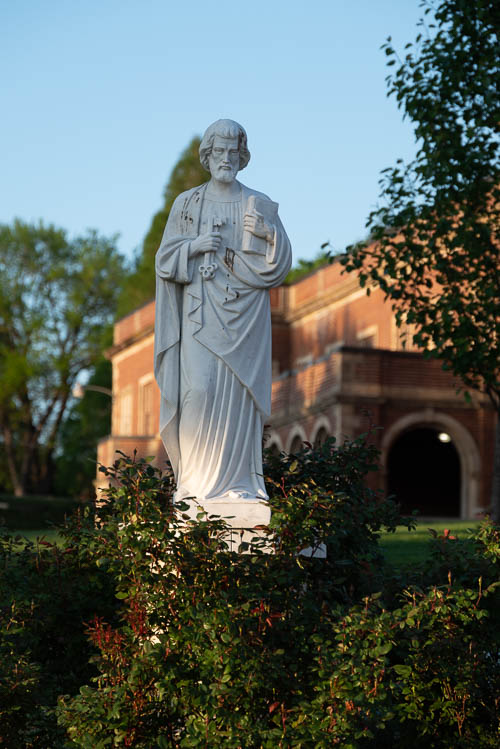
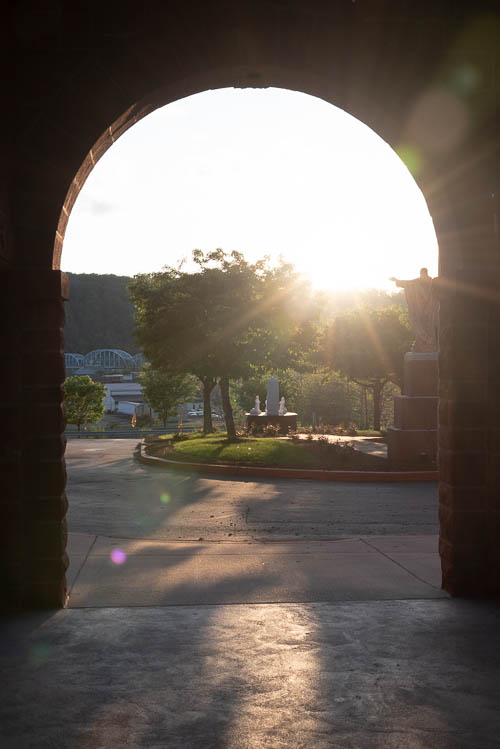

I live in a house built in the 1890’s. I spend a lot of time thinking about the people who lived here before me. What did these people know about their own world? What tragedies did they see and explore?
My husband, Jonathan, purchased our house a year before I met him. I had never actually been to New Kensington until I met Jonathan. Jonathan moved to New Kensington when he was in the sixth grade because his grandparents already lived here. That’s why he later decided to buy a house in the Parnassus neighborhood here.
Parnassus borders the Allegheny River. This is important for part of my story.
The Alter family originally owned my and Jonathan’s Victorian home here in Parnassus. This same family is now buried in a churchyard down the street from this same house. I speculate that some of them still reside in the home with me and Jonathan.
Jonathan researched the Alter family. He told me about the Alters when he first showed this house to me.
Let’s start with the family patriarch, Frank Alter Sr.
Alter was born in 1871 in Pittsburgh.
Alter’s father fought in the Civil War. Alter’s father then maintained a long career with the Allegheny Valley Railroad Company.
Frank Alter Sr.’s own professional life began at age 17 with his own job at the Allegheny Valley Railroad Company as a telegraph operator. Four years later, he was appointed station agent at New Kensington.
Now, shortly after Alter assumed his first job with the railroad, the Johnstown Flood killed over 2,000 people, in May 1889. A privately-owned dam on a private lake upstream from Johnstown failed. The wall of water demolished the communities that sat between the lake and Johnstown, and then the water hit Johnstown and destroyed it as well.
The flood occurred upstream from New Kensington as well. It occurred on a tributary to a tributary of the Allegheny River. According to the book “The Johnstown Flood” by David McCullough, flood debris washed downstream from Johnstown, eventually into the Allegheny River, on to Pittsburgh and points beyond. McCullough wrote that somebody plucked a live baby out of the Allegheny River in Verona, which is downstream from New Kensington. McCullough wrote that onlookers stood on the banks of the Allegheny, watching the results of the flood flow past them. Some even plucked souvenirs from the river.
Did Alter first learn about the flood during his duties in the telegraph office? Did he join the crowds which lined the Allegheny River’s banks?
Now, I grew up an hour’s drive south of Johnstown, and my sixth grade class studied the Johnstown Flood. We read excerpts from McCullough’s book.
McCullough acknowledged at the beginning of his book that “most” of the dialogue in Chapters 3 and 4 of his book had been taken directly from a transcription of testimony taken by the Pennsylvania Railroad in the summer of 1889. The railroad’s tracks lined the tributaries hit hardest by the flood. The railroad’s telegraph system documented events leading to the moments before the flood wiped out the tracks and the telegraph lines.
McCullough’s book noted that in the moments before the Johnstown flood happened, a railroad telegraph agent communicated the impending dam failure to Hettie Ogle, who ran the “switchboard and Western Union office” in Johnstown.
McCullough identified Ogle as a Civil War widow who had worked for Western Union for 28 years. The book noted that she was with her daughter Minnie at the time. She passed the message on to her Pittsburgh office. McCullough noted that the two perished in the flood and their bodies were not recovered.
When I was in the sixth grade, I was told that Hettie Ogle faithfully stayed at her telegraph post and relayed river gauge data until at last she wrote:
THIS IS MY LAST MESSAGE
The story haunted me.
Based on how this story was presented to our class, I was under the impression that Hettie Ogle was trapped in the telegraph office with just her daughter. I assumed that Hettie Ogle and her daughter were “rare” because they were women who also worked outside the home at the telegraph office.
Now, here is something that McCullough’s book did NOT tell me, and that I learned instead from the website for the Johnstown Area Heritage Association (JAHA): Ogle was actually trapped in that office with her daughter Minnie, “four other young ladies” who were named by the JAHA website, and also two named men. When I read the website, I understood this to mean that all eight of the named women and men who were trapped in this telegraph office worked in the telegraph industry. They all perished.
I didn’t realize until I first read the JAHA website that Hettie Ogle actually managed an office full of staff. I also didn’t realize that many of the employees in Johnstown’s Western Union office in May 1889 were women.
I have since figured out that if Hettie Ogle worked for Western Union for 28 years until she died in 1889, that means that she started her Western Union career in 1861. The Civil War also started in 1861. As I noted above, she was identified as a war widow. Did she have to take a job with Western Union in order to support her children when her husband went off to war? Did she do it out of a sense of duty for the war effort, and then she stayed with it because she enjoyed the work? I speculate now about the circumstances that led her to her “duty” operating the telegraph.
Now, I speculate about many things. I speculate that since Frank Alter Sr. got his start in the railroad industry as a telegraph operator, the tragedies of the Johnstown Flood would have impacted him personally. Perhaps he even knew some of the telegraph and / or railroad employees who died that day in 1889.
The telegraph industry of the 1800’s fascinates me because I think a great deal about my own dependence on technology.
I first realized how much I – or at least my sense of well-being – depended on being able to keep contact with others and with information on September 11, 2001. I lived in the family home in Somerset County. I worked in downtown Johnstown. Flight 93 crashed between these two points while I was at work that day.
After I and my co-workers watched the twin towers burn live on television, our employer’s co-owner told us to “go back to work.”
However, a few minutes later, this same co-owner’s daughter rushed through the office to announce that a plane had crashed in Somerset County. (This plane, we later learned, was Flight 93.) We learned that we – along with every other worker in downtown Johnstown at that time – were being evacuated because a federal court building existed in downtown Johnstown. I couldn’t reach my family who lived with me in Somerset County on the phone. I attempted, and I had no connection. I then learned that we were being asked to stay off of our phones in order to leave the lines available for emergency crews. I also learned that a portion of Route 219 – the main highway that I used to drive to my family home in Somerset County – was closed due to the morning’s events. I was being forced to leave downtown Johnstown due to the mandatory evacuation, but I had no information about whether I would be able to get back to my home in Somerset County.
I made it home to Somerset County without incident. However, this was the first time that I remember feeling confused because all of my decision making instincts depended on information that I couldn’t access.
More recently, I thought that I was so slick because I specifically curated my Twitter feed to follow the feeds for Pittsburgh’s transit agency, the National Weather Service, and several other emergency management agencies. I worked in downtown Pittsburgh by then, and I commuted home each weeknight – usually by bus – to New Kensington. I reasoned that with my specially curated Twitter feed, I would have available all of the information that I needed to make informed decisions about my commute home if I were to be in Pittsburgh and a natural disaster – or another terrorist attack – happened.
However, on the day that Pittsburgh and its surrounding region had a major flash flooding event, Twitter broke. I had based my entire theoretical emergency plan on having up-to-the date tweets from all of the sources that I listed above. I had access to no updated information from any of these sources.
Once again, I felt completely betrayed by technology at the moment when I felt its need the most.
Now, for another story that I have about being dependent on technology:
I read part of “The Personal Memoirs of Julia Dent Grant (Mrs. Ulysses S. Grant).” Julia Dent Grant (JDG) was born in 1826. In 1844, Samuel Morse sent the United State’s first telegram over a wire from Washington to Baltimore. (Congress partially funded this.) In 1845, JDG’s father, Frederick Dent, travelled from their home in St. Louis to Washington for business. He sent a telegram to Baltimore. JDG wrote that her father received an answer within an hour and that “it savored of magic.” The event was such a big deal that Frederick Dent brought the telegraph repeater tape back home to St. Louis to show the family.
Now I’m going to skip ahead in the memoirs to 1851. At this point in the memoirs, JDG is married to Ulysses S. Grant and they have an infant son. Julia visited family in St. Louis while her husband was stationed at Sackets Harbor, near Watertown, in New York State. JDG planned to telegraph her husband from St. Louis, and then travel with her nurse to Detroit. Then, she would release her nurse and meet her husband in Detroit. Finally, she would travel with her husband from Detroit to Sackets Harbor. I am under the impression that the trip from St. Louis to Detroit to Watertown was all by train.
Well, JDG telegraphed her husband in St. Louis per the plan. She left St. Louis and travelled with her nurse to Detroit. She dismissed her nurse and waited for her husband in Detroit. Her husband never showed up. JDG eventually travelled alone with her baby to Buffalo, hoping to meet her husband there. Her husband wasn’t in Buffalo, so she continued on the train to Watertown. From Watertown, she had to hire a carriage (the Uber of the 1800’s), and travel to Madison Barracks, the military installation at Sackets Harbor. The entrance to Madison Barracks was closed, so she had to yell to get a sentry’s attention.
The telegram that JDG sent to her husband from St. Louis arrived at Sackets Harbor IN THE NEXT DAY’S MAIL.
That’s right – at some point in the journey, the telegram failed to perform its basic function as a telegram. The telegram became snail mail.
After JDG’s husband was promoted during the Civil War, he travelled with his very own personal telegraph operator. (In fact, the Grants learned about President Lincoln’s assassination through a personal telegram received by the personal telegraph operator.)
By the end of the Civl War, the Grants had come a long way since their days of “snail-mail telegrams.”
Other people have actually written entire books about how telegraphs and semaphores affected the Civl War.
Here’s one of my favorite parts of JDG’s memoirs: At one point during the war, JDG asked her father, Frederick Dent, why the country didn’t “make a new Constitution since this is such an enigma – one to suit the times, you know. It is so different now. We have steamers, railroads, telegraphs, etc.“
I just find this so fascinating because JDG witnessed her country’s tremendous changes that resulted from Technology. She wondered how all of these Technology changes affected her country.
I, personally, spend a lot of time wondering about how Communication Technology in general – the telegraph, the internet, whatever – changed our national culture and also changed each of us as people.
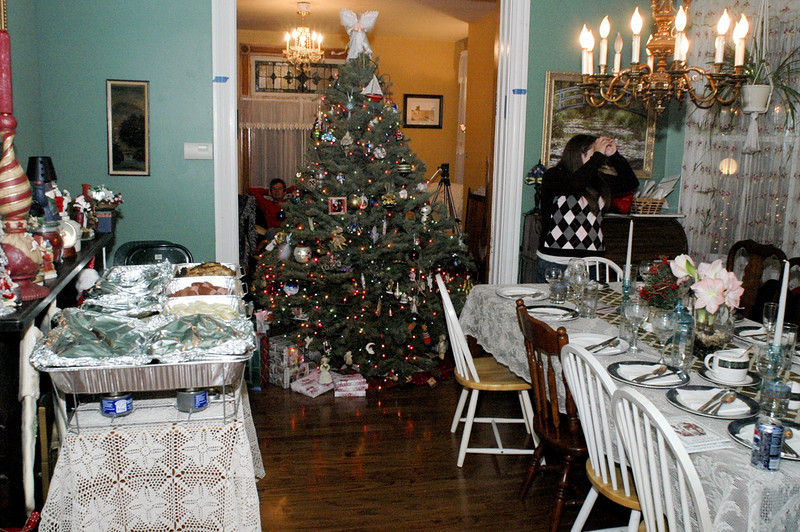
I am so excited to present Jonathan and Jennifer Woytek’s Christmas 2020 Virtual House Tour. Jonathan finished this tonight especially for all of you, since we aren’t having visitors at our house this holiday season.
Our house was built in the 1890’s. I intend, at some later date, to blog a little bit about this house and the Victorian-era traditions that it might have seen.

Woodpecker. New Kensington, Westmoreland County, Pennsylvania. November 6, 2020. (Photo: Jenny Gaffron Woytek)
Here is a woodpecker that I saw in my neighborhood this afternoon.
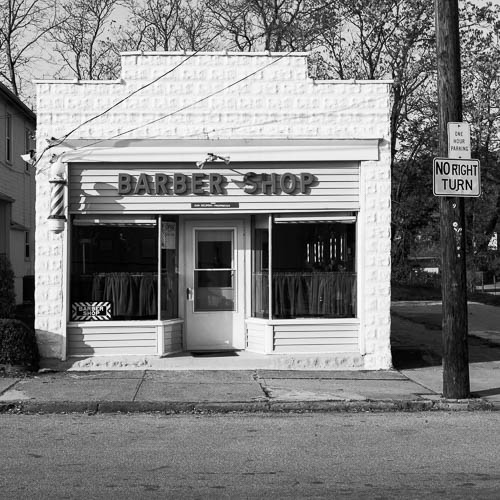
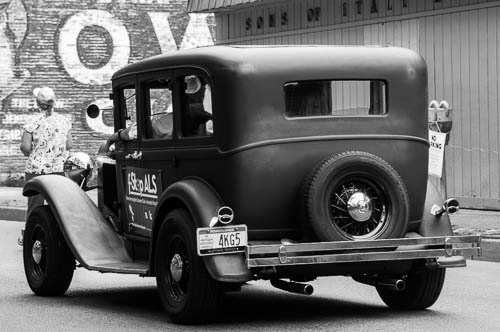
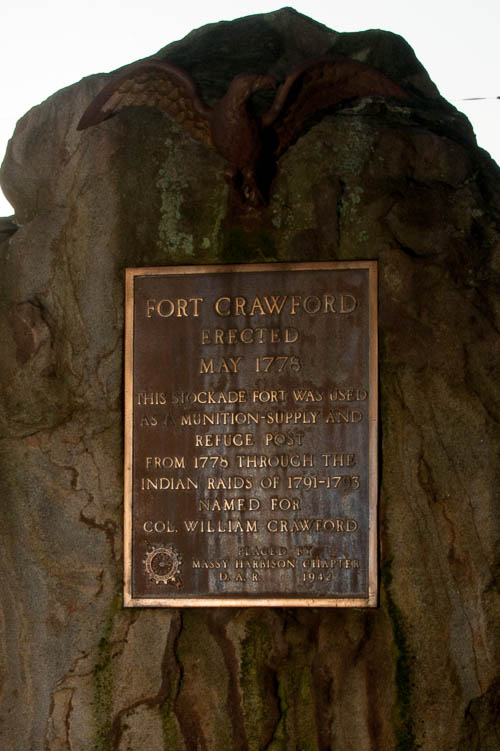
Edited February 1, 2022:
I just learned that Parnassus (in New Kensington, PA) shares a historical figure with downtown Columbus, Ohio. In fact, this story even left its mark on Columbus’ current National Hockey League arena.
I discovered this from an episode of Haunted Talks – The Official Podcast of the Haunted Walk, hosted by Creative Director Jim Dean. In Episode 68 – Columbus Ghost Tours, the host interviewed the Columbus tour co-owner Bucky Cutright.
Cutright shared one ghost story from his tour – the tale of “haunted” Nationwide Arena, the home of the Columbus Blue Jackets, an NHL team. Cutright revealed that the arena was built on the parking lot for the former Ohio Penitentiary.
Cutright noted that an indigenous Mingo village (Salt-Lick Town) once stood on this entire property. He talked about the village’s destruction in 1774. He described the death toll of Mingo families, at the hands of white settlers led by a man named William Crawford.
(My knowledge of the incident in question is limited to the interpretation of this referenced tour guide operator. I have no knowledge of the tour operator’s research methods.)
“Wait a minute,” I thought. “Our William Crawford?“
See, I live in the Parnassus neighborhood in New Kensington, Pennsylvania. Parnassus emerged from the remains of Fort Crawford, at the confluence of Pucketa Creek and the Allegheny River.
Colonel William Crawford’s troops in the Continental Army built Fort Crawford in 1777. This was during the American Revolutionary War. Crawford previously fought with the British in the French and Indian War in the 1750’s. Crawford survived the Battle of the Monongahela (Braddock’s Defeat) in 1755. Crawford knew George Washington!
I Googled “William Crawford” and “Columbus.” I saw the portrait of the man who led the expedition on Salt-Lick Town in present-day Columbus. This was indeed “our” William Crawford!
Now, to be clear, I do realize that William Crawford doesn’t “belong” to New Kensington. Crawford was born in Virginia. Connellsville, PA, reconstructed his Pennsylvania log cabin. Crawford County, PA, was named after William Crawford. Crawford County, OH, was also named after William Crawford.
(Edited February 1, 2023 to clarify: Colonel Crawford was involved with multiple controversies. His legacy has now extended to lore and historical fiction. See my above note that he is now apparently the subject of a tale in a ghost story tour in Colunbus, Ohio. He also appears in a historical fiction novel that I reference later in this blog post.)
For instance, Crawford was involved in Lord Dunmore’s War. The Heinz History Center in Pittsburgh has an exhibit about this.
Let me tell you a little bit about how Colonel William Crawford died.
The American Revolutionary War ended in 1783. However, in the years before this, the settlers in colonial Pennsylvania and Ohio fought the British and they also fought assorted Native American communities. The settlers killed Native Americans, and the Native Americans killed settlers.
(The Heinz History Center, which was linked above, is an excellent resource about this historical period. The following is a very, very stripped down story about Simon Girty’s alleged role in the death of Colonel Crawford.)
During this time period, Simon Girty, a white guide who was raised by Native Americans, defected to the British and their Native American allies. Prior to the defection, Girty operated out of Fort Pitt as a “home base.” Girty’s defection to the British was a controversial event in Western Pennsylvania. Girty fled to Ohio. I invite you to read the resources available through the Heinz History Center for a more in-depth discussion about Simon Girty.
Then, in 1782, Crawford led the Crawford Expedition against Native American villages along the Sandusky River in Ohio. These Native Americans and their British allies in Detroit found out about the expedition. They ambushed Crawford and his men. These Native Americans and the British troops defeated Crawford and his militiamen.
A force of Lenape and Wyandot warriors captured Crawford. They tortured Crawford. They executed him by burning him on June 11, 1782.
Simon Girty was there, at William Crawford’s execution.
In fact, witnesses alleged that Girty “egged on” Crawford’s captors as they tortured him. Witnesses even alleged that Crawford begged Girty to shoot him as he burned alive, and that Girty laughed at Crawford.
Girty denied that he encouraged the warriors who tortured Crawford.
Girty settled in Detroit, among the British. Years later, Detroit became part of the United States and Girty fled to Canada. At least one internet source listed Girty as a Canadian historical figure. I learned that Girty’s name appears on an Ontario memorial for “Loyalists” (to the British Crown).
The Pennsylvania Historical and Museum Commission (PHMC) dedicated at least two plaques in Girty’s memory. (To my knowledge, the PHMC dedicated one plaque to Girty in Pittsburgh (near the Waterfront shopping district) and another plaque to Girty along the Susquehanna River in the Harrisburg area. This second plaque commemorates Girty’s birthplace in Perry County.
Now, Hannastown was the first county seat of Westmoreland County, PA. I read that the town lost a significant portion of its able-bodied fighting men in the Crawford Expedition. On July 13, 1782, Seneca warrior Guyasuta and his men burned Hannastown and its crops. Greensburg became the county seat after this.
If you want to read historical fiction in which William Crawford and Simon Girty appear together, then I suggest “The Day Must Dawn” by Agnes Sligh Turnbull.
(Postscript, 09/16/20: Per the photo at the top of this blog post, there is a monument to Fort Crawford and to Colonel William Crawford in Parnassus in New Kensington. The Daughters of the American Revolution dedicated it in 1943.)